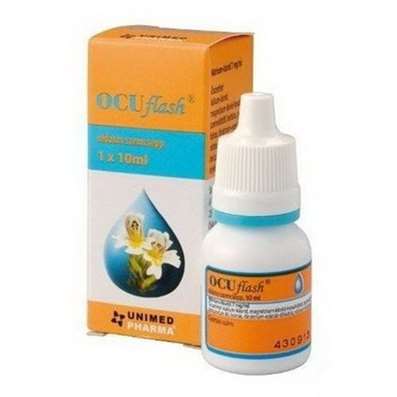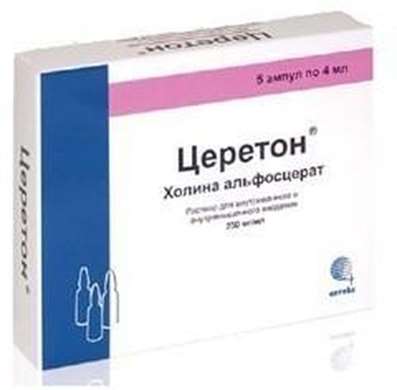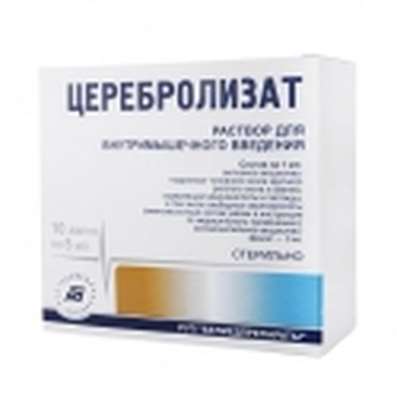Instruction for use: Lipegfilgrastim
I want this, give me price
Trade name of the drug – Lonquex
The Latin name of the substance Lipegfilgrastim
Lipegfilgrastimum (genus. Lipegfilgrastimi)
Chemical name
(2R, 4S, 5R, 6R) -2 - [[(2R, 3R, 4R, 5R, 6S) -5-acetamido-6 - [(1S, 2R) -1-amino-1-carboxypropan-2-yl ] Oxy-3,4-dihydroxyoxan-2-yl] methoxy] -4-hydroxy-5 - [[2- (2-methoxyethoxycarbonylamino) acetyl] amino] -6 - [(1R, 2R) -1,2,3 -trihydroxypropyl] oxane-2-carboxylic acid
Gross formula
C27H46N4O19
Pharmacological group:
Stimulators of hematopoiesis
The nosological classification (ICD-10)
D72.8.0 * Leukopenia: Autoimmune neutropenia; Congenital neutropenia; Granulocytopenia; Idiopathic and drug-induced leukopenia; Idiopathic neutropenia; Leukopenia aplastic; Leukopenia radiation; Leukopenia with radiation therapy; Radiation leukopenia; Hereditary neutropenia; Neutropenia in patients with AIDS; Periodic neutropenia; Radiation leukopenia; Persistent neutropenia; Febrile neutropenia; Two-stage cytopenia; Radiation cytopenia; Neutropenia is cyclic
Z51.1 Chemotherapy for neoplasm: Cystitis hemorrhagic, caused by cytostatics; Urotoxicity of cytostatics
CAS code
208265-92-03
Characteristics of the substance Lipegfilgrastim
Lipegfilgrastim is a covalent filgrastim conjugate bound to one molecule of methoxypolyethylene glycol through a carbohydrate linker consisting of glycine, N-acetylneuraminic acid and N-acetylgalactosamine.
Pharmacology
Mode action - Leukopoietic.
Pharmacodynamics
The human granulocyte colony-stimulating factor (G-CSF) is a glycoprotein that regulates the formation of functionally active neutrophils and their release into the peripheral blood from the bone marrow. Filgrastim is a non-glycosylated recombinant human G-CSF with an additional methionine residue. Lipegfilgrastim is a prolonged form of filgrastim due to reduced renal clearance. Lipegfilgrastim binds to the G-CSF receptor like filgrastim and pegfilgrastim.
Lipegfilgrastim significantly increases the number of neutrophils in the peripheral blood in the first 24 hours after administration, causing a small increase in the number of monocytes and / or lymphocytes. Due to the presence of a part of G-CSF in the lipegflilgrastim molecule, this growth factor has the expected activity: it stimulates the proliferation of hematopoietic progenitor cells, their differentiation into mature cells and the release into the peripheral blood. G-CSF is a specific factor not only for neutrophils, it also has the effect on other progenitor cells that give from one to several differentiation lines, and to polypotent hematopoietic stem cells. In addition, G-CSF increases the phagocytic and antibacterial activity of neutrophils, enhancing the cellular mechanisms of anti-infective immunity by priming neutrophils.
According to clinical studies, it was found that the duration of severe neutropenia in the first cycle of chemotherapy in the treatment with lipegglilgrastim and pegfilgrastim is generally similar, the frequency of occurrence of febrile neutropenia is significantly higher in the placebo group compared to the group of patients treated with lipegfilgrastim, the effective dose is 6 mg of lipegfilgrastim .
Pharmacokinetics
In healthy volunteers, after a single injection of various doses of Cmax lipegfilgrastim in blood plasma was achieved on average 10-30 hours, with the final T1 / 2 on average being 32-49 hours.
Special patient groups
In patients with breast cancer who received chemotherapy with a combination of doxorubicin and docetaxel, after a single injection sc injection 3; 4.5 or 6 mg lipegfilgrastim in the first cycle of chemotherapy Cmax lipegfilgrastim in the blood was achieved on average 47 hours, with the final T1 / 2 averaged 23-32 hours. After a single SC injection 3; 4,5 or 6 mg lipegfilgrastim in the fourth cycle of chemotherapy Cmax lipegfilgrastim in blood plasma was achieved on average 11 hours, with the final T1 / 2 averaged 26-41 hours.
In patients with non-small cell lung cancer receiving chemotherapy with a combination of cisplatin and etoposide, the average Cmax lipegfilgrastim in the blood, equal to 317 ng / ml, was attained on average after 24 hours, and the mean final T1 / 2 was approximately 28 hours after a single SC injection 6 Mg lipegfilgrastim during the first cycle of chemotherapy. After a single injection of 6 mg lipegfilgrastim during the fourth cycle, the average Cmax lipegfilgrastim in the blood was 149 ng / ml at an average of 8 hours and the mean T1 / 2 was approximately 34 hours.
The excretion of lipegfilgrastim decreases with an increase in its dose, which is probably due to a decrease in the clearance of lipegfilgrastim mediated by the effect of neutrophils. In accordance with the self-regulating mechanism of clearance, the concentration in the blood plasma of lipeflilgrastim slowly decreases during the transient reduction in the number of neutrophils associated with chemotherapy, and quickly - after the start of recovery of the number of neutrophils.
Renal or hepatic impairment
Given the effect of neutrophils on clearance, it is clear that the pharmacokinetic indices of lipegfilgrastim do not change with renal or hepatic insufficiency.
Elderly patients
Limited data suggest that the pharmacokinetics of lipegfilgrastim in elderly patients (65-74 years) is similar to that characteristic of young patients. No pharmacokinetic data for lipegfilgrastim for patients over the age of 75 years.
Excess body weight
The tendency to reduce the effects of lipegfilgrastim was observed in patients with an increase in body weight. This can lead to a decrease in pharmacodynamic responses in patients with a large body weight (> 95 kg). Based on the available data, these patients cannot be excluded from the subsequent loss of efficacy.
Application of the substance Lipegfilgrastim
Reduction of the duration of neutropenia and a decrease in the incidence of febrile neutropenia due to myelosuppressive cytotoxic chemotherapy for malignant diseases (with the exception of chronic myelogenous leukemia and myelodysplastic syndrome).
Contraindications
Hypersensitivity to lipagfilgrastimu (including colony stimulating factors: filgrastimu, pegfilgrastima) and Escherichia coli, children's age to 18 years.
Restrictions
Malignant and premalignant diseases of myeloid nature (including acute myelogenous leukemia de novo and secondary), sickle-cell anemia, use in combination with high-dosage chemotherapy, fructose intolerance, sugarase / isomaltase insufficiency, glucose-galactose malabsorption syndrome.
Application in pregnancy and breastfeeding
It is not recommended to use lipegfilgrastim during pregnancy. Pre-clinical studies have not revealed a toxic effect on reproductive function. Experience with pregnant women is limited.
It is not known whether lipegfilgrastim is excreted in breast milk. Therefore, it is impossible to exclude the possibility of side effects in children during breastfeeding. The decision to stop breastfeeding or stop / stop treatment with lipegfilgrastim should be taken, given the expected benefit of breastfeeding for an infant and treatment for the mother.
Data on the effect of lipegfilgrastim on fertility are not available.
Side effects of the substance Lipegfilgrastim
On the part of blood, blood and lymphatic system: thrombocytopenia, leukocytosis, splenomegaly, symptoms of rupture of the spleen - pain in the upper left quadrant of the abdomen, pain in the upper part of the left shoulder, rupture of the spleen, in some cases with fatal outcome.
On the part of the immune system: hypersensitivity reactions, allergic skin reactions, urticaria, angioedema.
From the nervous system: headache, dizziness.
From the CVS: tachycardia.
From the respiratory, thoracic and mediastinal organs: cough, shortness of breath, interstitial pneumonia, pulmonary edema, pulmonary infiltrates, pulmonary fibrosis, respiratory failure, adult respiratory distress syndrome.
From the digestive system: nausea, pain in epigastrium.
From the skin and subcutaneous tissues: erythema, skin rash, itching, reaction at the injection site (pain, hyperemia, densification), alopecia, acute febrile neutrophilic dermatosis (Sweet syndrome), cutaneous vasculitis.
From the musculoskeletal system: mild to moderate bone and muscle pain, which is usually transient, joint pain, pain in the neck and chest.
On the part of laboratory indicators: hypokalemia, hypophosphatemia, reversible increase in LDH activity, alkaline phosphatase.
Other: fever, asthenia, fatigue, weight loss.
Interaction
Studies on the interaction of lipegfilgrastim with other drugs have not been conducted.
Because of the possible high sensitivity of rapidly dividing myeloid cells to cytotoxic therapy, lipegfilgrastim should be administered 24 hours after the end of the cycle of cytotoxic chemotherapy.
Evaluation of the simultaneous use of lipegfilgrastim and any chemotherapeutic drug in patients was not performed. In preclinical studies, it was shown that the simultaneous use of G-CSF and fluorouracil or other antitumor drugs of the antimetabolite group enhances myelosuppression.
An evaluation of the safety and efficacy of lipegfilgrastim in patients receiving chemotherapeutic drugs whose use is associated with delayed myelosuppression (eg, nitrosourea derivatives) has not been performed. The possibility of interaction with lithium, which also contributes to an increase in the number of neutrophils in peripheral blood, has not been specifically investigated. There is no evidence that this interaction can be dangerous.
Overdose
No cases of an overdose of lipegfilgrastim have been observed.
Routes of administration
SC.
Precautions for the substance Lipegfilgrastim
Treatment by lipegfilgrastim should be carried out only under the supervision of a doctor who has experience in the use of colony-stimulating factors, with the necessary diagnostic capabilities.
The safety and efficacy of lipegfilgrastim in patients receiving high-dose chemotherapy have not been studied. Lipegfilgrastim should not be used to increase the dose of cytotoxic chemotherapy above the dose set by the regimen.
Patients who are sensitive to G-CSF or its derivatives are also at a risk of developing hypersensitivity reactions to lipegfilgrastim in connection with possible cross-hypersensitivity. These patients should not use lipegfilgrastim because of the risk of developing a cross-reaction.
Most drugs of biological origin can trigger a response in the form of the appearance of a certain level of anti-drug antibodies. Such a humoral immune response may in some cases lead to the development of undesirable effects or loss of efficacy. If the patient does not respond to treatment, he should undergo further examination.
With the development of a severe allergic reaction, appropriate therapy should be conducted, followed by careful monitoring of the patient for several days.
Treatment with lipegfilgrastim does not prevent the development of thrombocytopenia and anemia caused by myelosuppressive chemotherapy. Lipegfilgrastim can also cause thrombocytopenia, therefore it is recommended to regularly determine the number of platelets and the hematocrit. One-component or combined chemotherapeutic regimens known for their ability to cause severe thrombocytopenia should be used with caution.
Possible development of leukocytosis. No adverse events directly related to leukocytosis have been reported. The increase in the number of leukocytes in the blood corresponds to the pharmacodynamic effects of lipegfilgrastim. Given the clinical effects of lipegfilgrastim and the possible risk of leukocytosis, during treatment with lipegfilgrastim, the number of leukocytes should be monitored regularly. If the number of white blood cells after the estimated minimum level exceeds 50 × 109 / L, treatment with lipegfilgrastim should be immediately terminated.
The increased hematopoietic activity of the bone marrow in response to therapy with growth factors leads to transient positive changes in the visualization of bones, which should be taken into account when interpreting the results of radionuclide scintigraphy.
In myelodysplastic syndrome and chronic myelogenous leukemia, the efficacy and safety of lipegfilgrastim have not been established. In patients with the aforementioned diseases, as well as with premalignant lesions of the myeloid germ of hematopoiesis, lipegfilgrastim is not indicated. Particular attention should be paid to a differential diagnosis between the blast crisis of chronic myelogenous leukemia and acute myeloid leukemia.
When G-CSF was used, cases of splenomegaly, which proceeded asymptomatically, and rupture of the spleen were recorded, incl. With a lethal outcome. When using lipegfilgrastim should monitor the size of the spleen (clinical examination, ultrasound). Spleen rupture should be suspected when there is pain in the upper left quadrant of the abdomen and pain in the upper part of the left shoulder.
After the use of lipegfilgrastim, adverse events were reported from the lungs, in particular, interstitial pneumonia. Patients with recent pulmonary infiltrates or history of pneumonia may have a higher risk of developing such adverse events. Symptoms of lung injury such as cough, fever and dyspnea combined with pulmonary infiltrates confirmed by an X-ray study, accompanied by impaired lung function and an increase in the number of neutrophils, can be the first signs of adult respiratory distress syndrome. In this case, it is necessary to stop the use of lipegfilgrastim and to conduct appropriate therapy.
The development of sickle-cell crisis was associated with the use of G-CSF or its derivatives in patients with sickle cell disease. Therefore, lipegfilgrastim should be used with caution in patients with sickle cell disease, carefully monitor the relevant clinical and laboratory indicators, taking into account the possible increase in the spleen and the development of thrombosis of blood vessels during therapy with lipegfilgrastim.
In patients with an increased risk of hypokalemia due to concomitant disease or simultaneous use of other drugs that cause hypokalemia, it is recommended to monitor the potassium content in the blood plasma.
The sodium content in 0.6 ml of the solution of the ready-to-use lipegfilgrastim drug is less than 1 mmol (23 mg) and is of no clinical significance.
Due to the fact that sorbitol is included in the ready-to-use lipegfilgrastim drug, it is not recommended to use it in patients with hereditary intolerance to fructose, sugarase / isomaltase insufficiency, glucose-galactose malabsorption syndrome.
Influence on the ability to drive vehicles and mechanisms. Lipegfilgrastim does not significantly affect the ability to drive vehicles and work with machinery. Patients should be warned about the possibility of developing dizziness. When dizziness occurs, you should refrain from performing these activities.

 Cart
Cart





